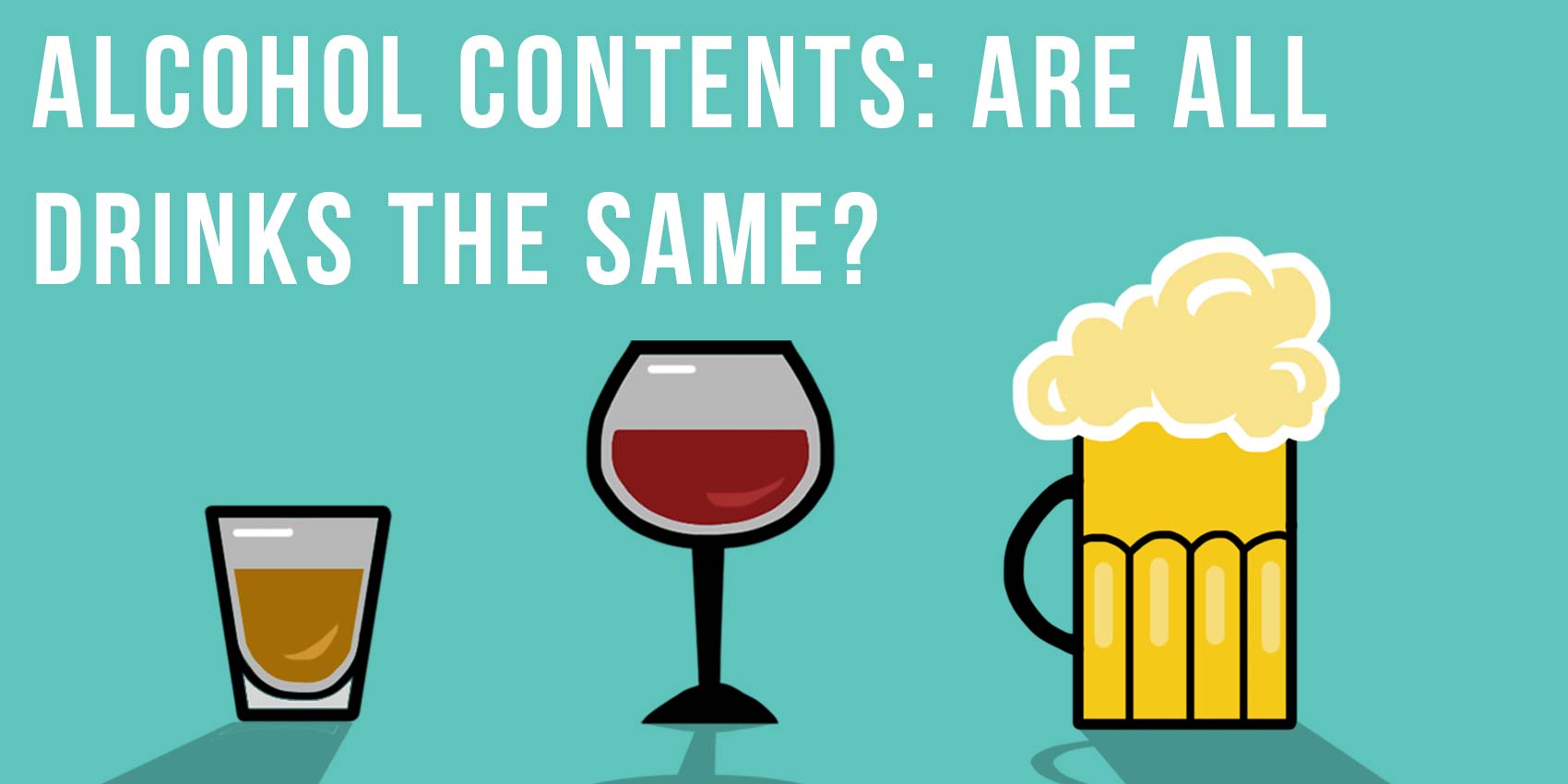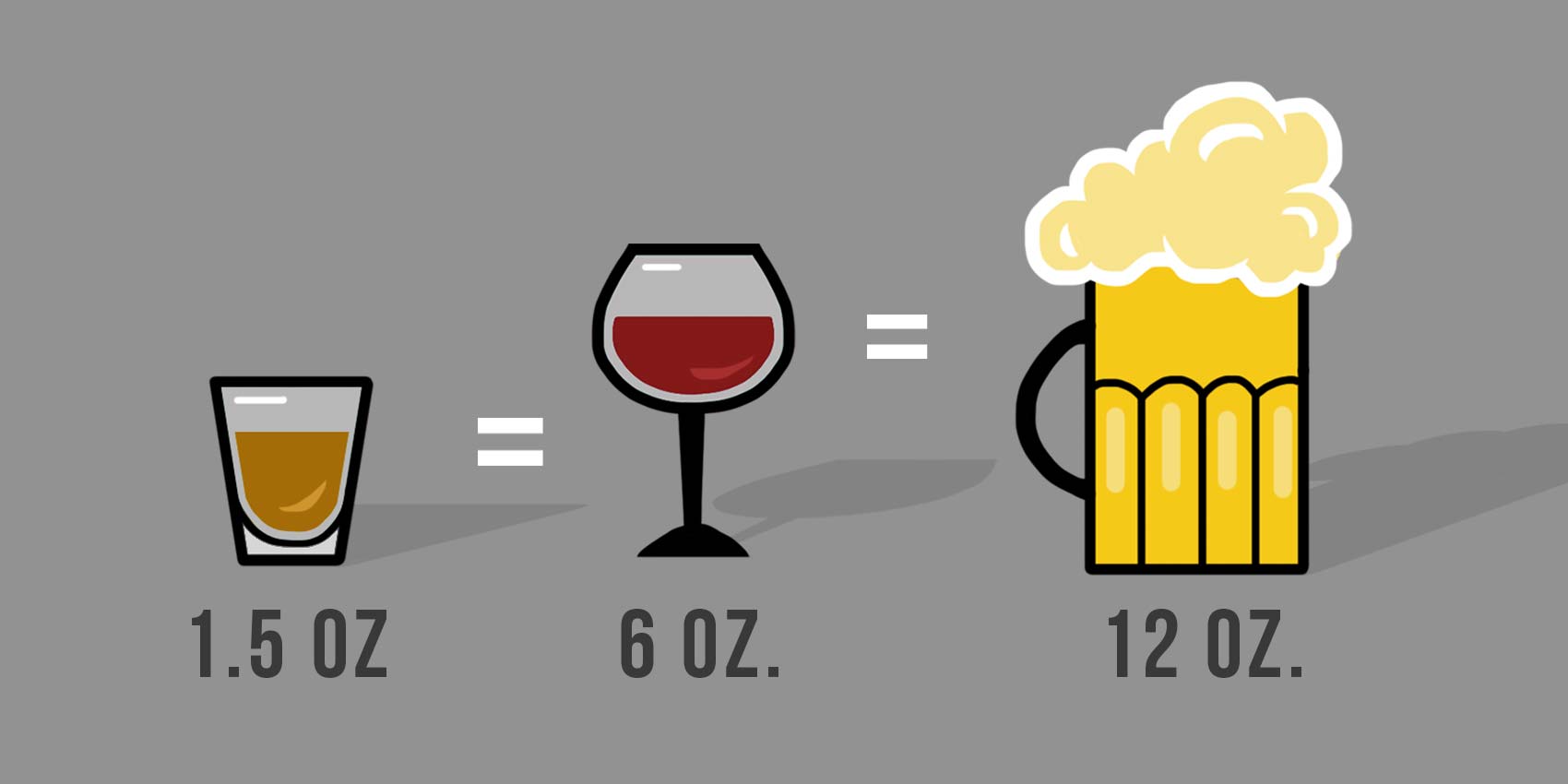12 Oct Alcohol contents: are all drinks the same?

As discussed above, alcoholic beverages are created by fermenting fruits and grains. Depending on the grain fermented and if the alcohol is distilled (meaning if it is made more concentrated), different types of alcohol are created. These different categories of alcohol are generally classified as:
hard liquor (also called “spirits”—they are created by distillation)
beer
wine
Hard liquors have a higher alcohol content due to the distillation process.
As a general rule of thumb, one shot of liquor (1.5 oz) is equal in alcohol content to one 6 oz. glass of wine or one 12 oz. mug of beer.

However, that is a very rough rule of thumb. Why? Because not all beers, wine and spirits have the same alcohol content. There is a range. Here is a breakdown of the general ranges of alcohol content (from http://www.alcoholcontents.com)
Beer: 3–10% alcohol
Wine: 8–22% alcohol
Whiskey, Tequila, Rum or Vodka : 40% alcohol
Spirits in general: 20-70%
Absolute alcohol (ethanol): 96-98%
These varying alcohol contents is why noting that the above visual is just a general rule of thumb and not 100% accurate. Here’s an example to explain how the alcohol content matters: let’s say your mom drinks three glasses of red wine while your dad has three glasses of beer, according to the visual chart, they likely had the same amount. EXCEPT that your dad’s beers actually had a low alcohol content—5% each. But your mom’s red wine was on the higher side, 20% for each glass. When you calculate how much alcohol they each had, your mom actually had double the alcohol content (6oz wine x 3glasses x 20%= 3.6 while 12oz beer x 3glasses x 5%= 1.8).
So if that was confusing or if you just hate math, don’t worry. Here’s the main point: the alcohol content of a drink is important to consider, not just the ounces consumed. Safe drinking takes these factors into account. The more a person is aware of all these factors, the better she can gauge her alcohol consumption.
People’s ability to handle alcohol will depend on the type of alcohol they drink and many other factors, such as their body type, gender, health, age, experience with alcohol and amount of food consumption. Knowing what a person can handle comes from experience and self-awareness. Managing alcohol is a complicated process—which is one of the many reasons why alcohol consumption is illegal for minors.
Read the next sub-post to understand how the alcohol content of these drinks affects your blood alcohol content…




Post Question:
Do you ever say something when you see someone drink too much? What might you say if you were in such a situation?
Answer the post question here
What's being said